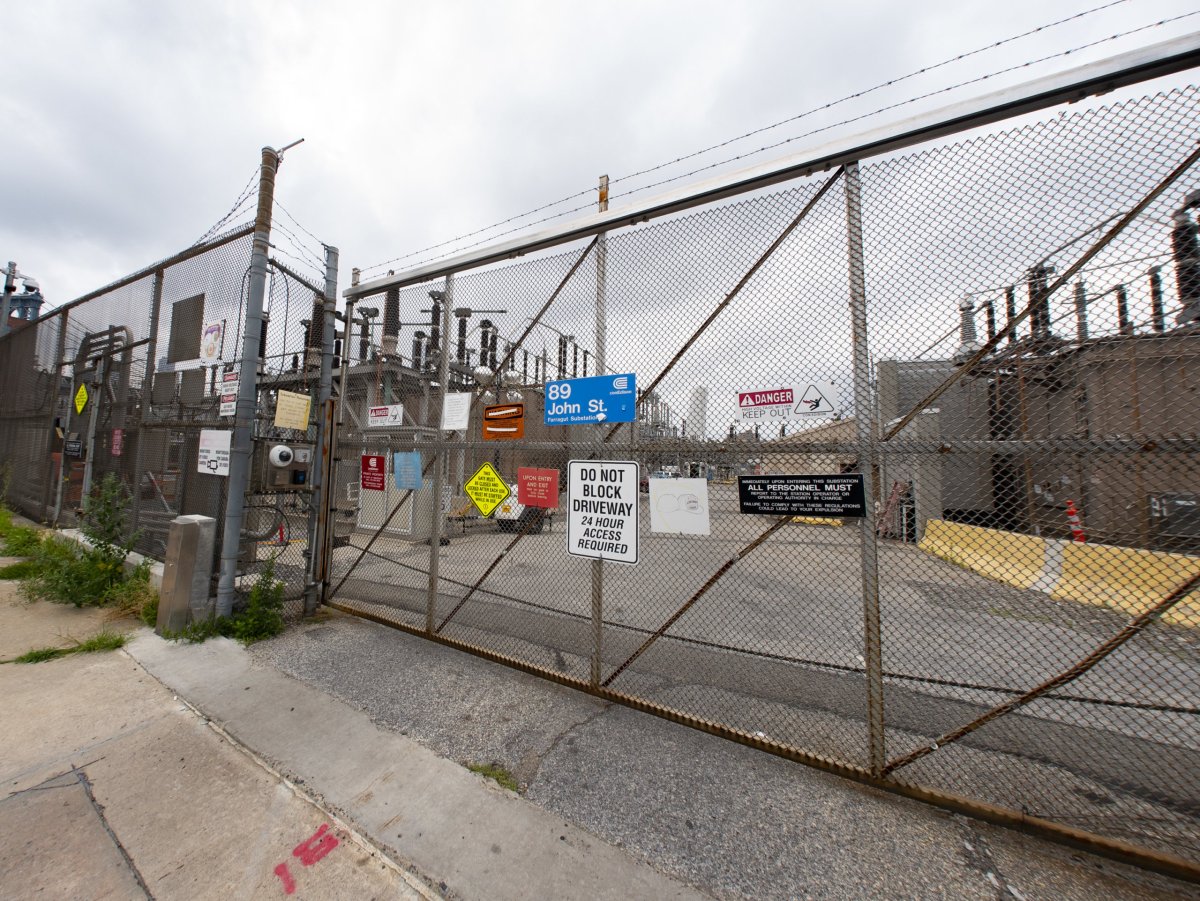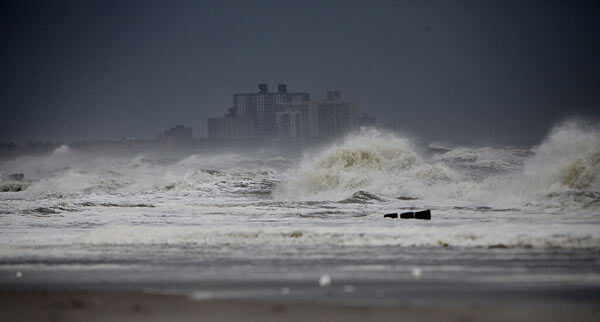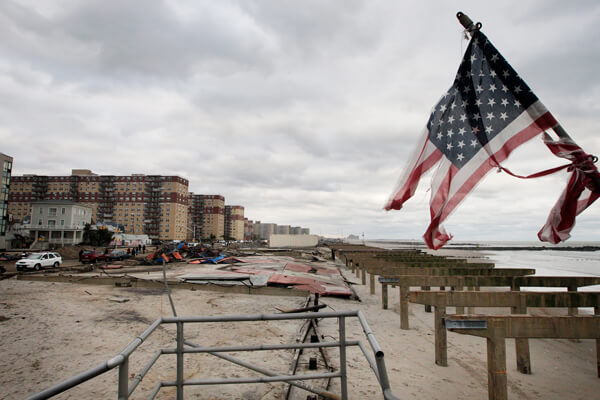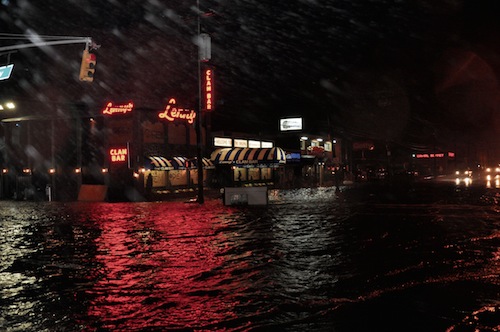This article was originally published on by THE CITY. Sign up here to get the latest stories from THE CITY delivered to you each morning.
Households in New York City are seeing big spikes in what they’re being charged this month, even though many aren’t using significantly more juice. We explain why, and what you can do.
Has your electric bill recently given you a shock? You’re not alone.
When temperatures go down, your bills often go up, especially if you’ve got electric heating. But Con Ed customers in New York City are seeing big spikes in what they’re being charged this month, even though many aren’t using significantly more electricity.
Andrea Lewis’ bill more than tripled in one month, leaping from $163.73 in December to a whopping $512.07 by the end of January, she showed THE CITY.
Lewis, 28, who lives alone in a one-bedroom apartment in Prospect Lefferts Gardens, Brooklyn, used almost twice as much electricity in the most recent billing period compared to the previous, which made sense given that her heat is electric. But the cost swelling to more than three times as much didn’t square.
She works from an office every day and keeps her electric heat hovering between 60 and 65 degrees when she’s out to keep her cat comfortable. When she called Con Ed to ask why her bill was so high, a customer service rep asked her to try closing the window or hire an electrician to determine if there’s a problem with one of her appliances.
“I was like, ‘Is this really just a me problem?’” Lewis recalled. “It’s insane of a hike. It is clearly not an individual consumer issue.”
She’s right.
The problem has to do with an increasingly global fuel market and the dual structure of electric bills.
Though the issue is not unique to New York, these sticker shocks are tied to larger policy dilemmas about how the state will equitably implement the provisions of its climate law that calls for clean electric generation.
Jasmine Graham, an energy justice policy manager with the nonprofit WE ACT for Environmental Justice, pointed out that low-income and non-white utility customers “already spend a disproportionately higher percentage of their household income on energy and, being more likely to live in energy inefficient homes, often have a greater need for energy as well.”
In the meantime, New Yorkers — who already pay some of the highest prices for electricity in the country — are facing massive bills, compounding existing and pandemic-related financial hardships for many.
“I haven’t factored my bills or my life around simply being warm,” said Lewis, who works as an audio post-producer, and expects she can cover the bill for now — but not if she must pay an additional $300 a month moving forward.
“It feels stressful to be home,” she said. “Will it always be like this? What causes it to fluctuate? What is the root of it?”
Understanding Your Bill: Supply and Delivery
To get to the root of it, you first have to know what you’re looking at with your utility bill. In general, there are two main charges on an electric bill, on top of taxes and fees.
The first cost on the bill is called the delivery charge, which is for maintaining the system that transports the energy from where it’s generated to your home: the wires, substations, towers, transistors and other related infrastructure.
The state, through the Public Service Commission, regulates changes to those rates and must alert customers when there’s about to be a change to those rates.
The second section is the supply charge. Con Ed does not generate its own energy, but is responsible for transporting it to customers. The company sells the energy to you, the consumer, at the same price it pays the suppliers. Con Ed doesn’t set those rates — and those are changing a lot.
 Courtesy of Andrea Lewis
Courtesy of Andrea LewisTake Lewis’ bill: the delivery charge went up about a penny per kilowatt-hour of energy use in this recent billing period compared to last, but the supply charge increased threefold, from 6.6 cents per kilowatt-hour to 19.6 cents.
At the higher cost, Lewis owes about $270 in supply charges. If she used the same amount of energy but the supply cost remained as it did in the previous billing cycle, she would only owe about $91 for her supply charges.
So it’s not all Con Ed’s fault: the company doesn’t set the energy prices and the company is by law not allowed to make a profit selling electricity.
Con Ed did recently raise rates influencing the delivery charges: In 2020, the state Public Service Commission approved a hike that would take effect over three years, with customers paying a monthly average of about 13% more for electricity by 2022 compared to 2019.
The hike was meant to cover some of Con Ed’s latest infrastructure investments. While Con Ed legally must sell electricity at cost, it’s allowed to make a financial return on what it pays to upgrade or maintain its physical system.
Con Ed is looking to raise rates again, too. In January the company filed a proposal with the Public Service Commission asking for $1.2 billion more to cover new transmission and resiliency projects, which would result in an estimated 11% bill increase for electric customers (gas customers will also see increases).
‘Volatile’ Energy
The supply-side costs change as a result of how the prices of the fuels used to run electricity generators rise and fall with the market, just like other commodities do.
“Energy prices are volatile and can be affected by factors such as weather, demand and economic trends,” Con Ed spokesperson Jamie McShane noted.
In the city, fossil fuels generate about 70% of our electricity. Natural gas, which powers most of the power plants that generate the electricity Con Ed buys and delivers to your home, is a commodity whose price goes up and down with supply and demand.
“Neither the state nor the federal government sets commodity [supply] wholesale energy prices; that is a function of the global marketplace,” PSC spokesperson James Denn wrote in an email.
The U.S. is increasingly exporting natural gas — in liquid form — to foreign countries. This month, a group of U.S. senators asked the Department of Energy to restrict those exports in order to stabilize domestic gas prices.
 Ben Fractenberg/THE CITY
Ben Fractenberg/THE CITYYannick DePina, 34, who recently moved from his Crown Heights three-bedroom apartment he shared with two roommates, faced a bill of $675.27 for the most recent billing period, compared to $255.03 in the previous one. He’s frustrated he didn’t get a heads-up from Con Ed about charge changes.
“They have our phone number. They text us all the time that they expected delays or expect something might be out or Con Ed’s fixing this. They have our information,” DePina said. “I don’t know if this is a sign of things to come, if this is going to go back down again. We’re literally left in the dark with a high bill and no transparency.”
While the state Public Service Commission must notify customers when utility companies request rate hikes for the delivery charge, and before those increases go into effect, the agency is not bound to alert them about supply-side changes. The PSC and utilities had predicted last fall that monthly supply charges across the state be an average of $43.
Climate Change Plans
If fossil fuel prices move at the whims of the market, some argue that increasing the supply will stabilize prices, especially in times of high demand.
Gavin Donohue, president of the trade association Independent Power Producers of New York, lamented what he described as lack of interest at the state and federal levels in “making sure we have an abundant amount of fossil fuel.” He pointed at the state’s recent denial of permits to replace generating stations that the companies said would be more efficient than the old units.
But burning more fossil fuels to make electricity isn’t in line with the state’s long-term plans to address climate change and improve public health.
“If fossil methane gas didn’t make people sick and cook the planet, then that would make a lot of sense,” said Justin Gundlach, a senior attorney at NYU School of Law’s Institute for Policy Integrity. “That would be a solution, but only if you’re willing to tolerate a long list of other costs and risks.”
Under the state climate law, New York must get all of its electricity from carbon-free sources by 2040. That means generating much more electricity from wind, solar and hydro, among other resources.
Today, less than 30% of our electricity comes from renewables on the state level, and more than half comes from fossil fuels, according to federal data. Just under 20% comes from nuclear.
Two planned transmission lines are set to bring clean energy into New York City from upstate and Canada within the next decade.
“That should lower prices,” said Paul Patterson, an analyst at the energy research firm Glenrock Associates. “That will bring in more supply.”
Making the transitions to greener forms of energy will cost billions of dollars. Private companies and New York utility customers will have to foot the upfront costs of the infrastructure required to harness and deliver cleaner energy. But inaction in the face of climate change will — and already has — cost lives and money.
“Renewable energy doesn’t have that volatile [pricing] stuff built into it because the fuel is free,” said Jessica Azulay, program director for the Alliance for a Green Economy. “That’s how we’re going to avoid ongoing increases in gas supply prices.”
Better insulating homes and building without gas appliances will help boost efficiency, too.
“If you need less [energy], it stands to reason that you will feel less of a ripple when the price changes,” Gundlach said.
What You Can Do Now
In November, Margaret Day, 37, moved into a two-bedroom apartment in Williamsburg with her husband and baby after winning an affordable-housing lottery. She says she made sure to turn off her heat at night and when she left her home. Day, who works as a librarian, was shocked when her most recent bill was over $420.62, jumping from $206.21 from the previous period, even though her energy use increased only 27%.
“It just feels illegal to me,” she said. “We happen to be a family that has some savings that we can rely on right now, but in terms of the long term, can we manage the increase of costs like this and of the inflation of other goods on our salaries, which are not increasing? The answer is no.”
If you’ve been hit with an astronomical electric bill, you’re most likely stuck with it. But several programs can help with utility costs, including the Home Energy Assistance Program for low-income New Yorkers. Con Ed also offers payment plans and other forms of assistance.
You can also file a complaint with the state Department of Public Service. And customers can find ways to use less electricity by washing laundry in cold water and installing efficient LED lights, among other measures.
 Courtesy of NYCHA
Courtesy of NYCHACon Ed also offers financial incentives for customers to use less energy and to help property owners weatherize their homes.
Subscribing to a community solar project can also bring down your bill to an extent. That would change up the supplier of your energy (but you would still be billed by Con Ed).
In fact, anyone can choose their own energy supplier by electing to get energy from entities known as Energy Services Companies, or ESCOs. These may tout lower prices energy, and some commit to advancing renewable energy resources.
But several experts told THE CITY it’s often not worth it for individual consumers to switch suppliers because they won’t use enough energy to save money — and they can face even higher prices than what’s already supplied through Con Ed.
And as for switching from Con Ed? Well, that’s your only option for electricity distribution in New York City.
“They have a monopoly on the owning of the wires,” Azulay said.
It’s another point of frustration for DePino, who recently moved to Harlem to live with his partner.
“I moved from a borough, in Brooklyn, to another borough,” he said, “and I’m still under the grip of Con Edison.”
THE CITY is an independent, nonprofit news outlet dedicated to hard-hitting reporting that serves the people of New York.




































